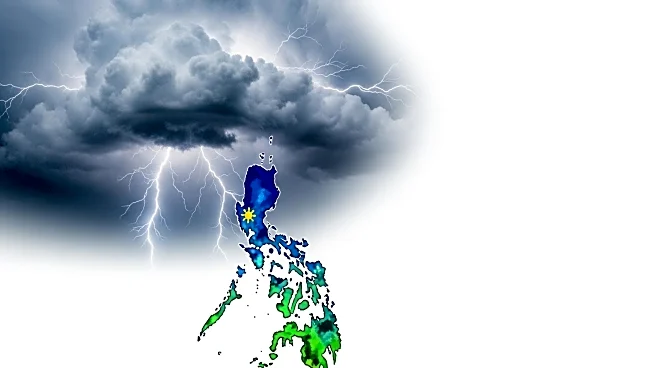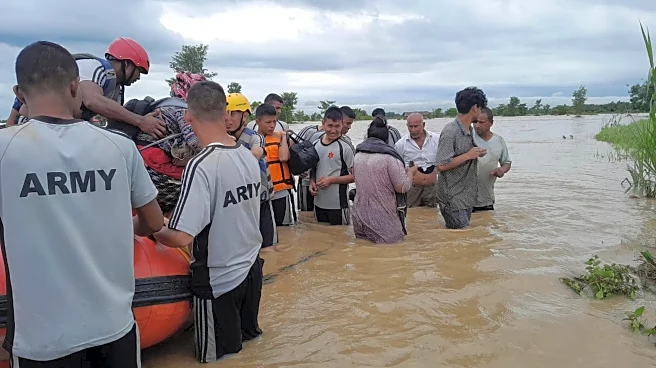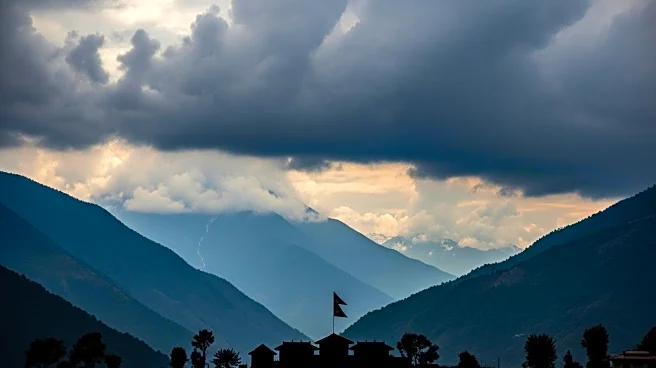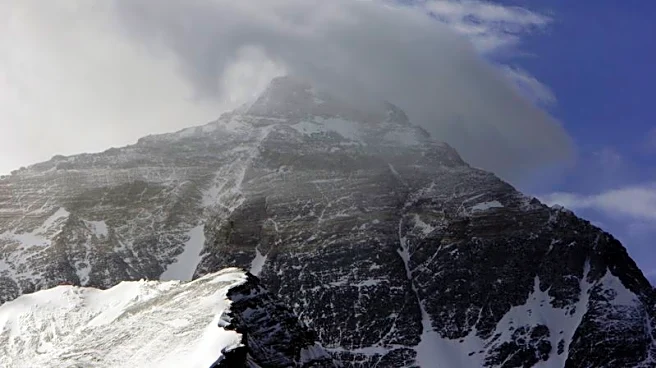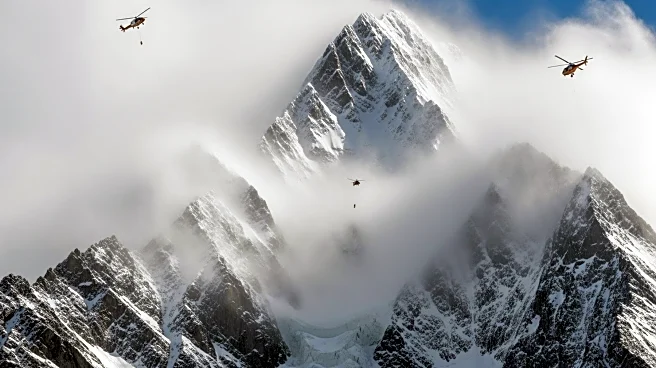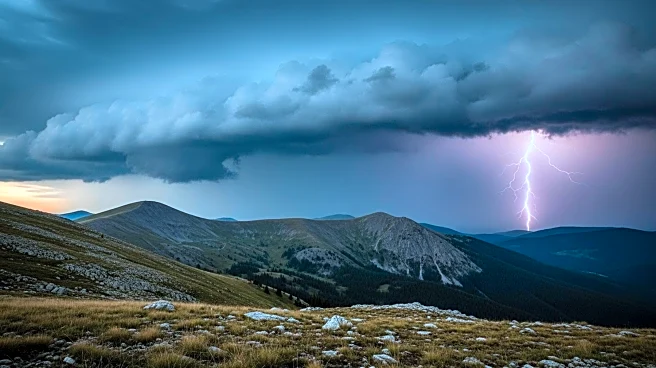What is the story about?
What's Happening?
Nepal has been hit by severe rainfall leading to landslides and flooding, resulting in the deaths of at least 44 people, with five others reported missing. The eastern mountain district of Illam, known for its tea production, was particularly affected, with entire villages swept away. The National Disaster Risk Reduction and Management Authority reported that heavy rainfall has been ongoing since Friday, complicating rescue efforts as roads are blocked or destroyed. Helicopters and ground troops are being deployed to evacuate those in need of medical assistance and to relocate residents to safer areas. The government has issued a severe rainfall warning and closed major highways, while domestic flights were temporarily grounded due to poor visibility.
Why It's Important?
The disaster underscores the vulnerability of Nepal's infrastructure to extreme weather events, particularly during the monsoon season. The impact on local communities is profound, with loss of life and destruction of homes and livelihoods. The closure of major highways and grounding of flights disrupts transportation and economic activities, affecting thousands returning to Kathmandu after the Dashain festival. The government's response, including evacuation efforts and road closures, highlights the challenges in managing natural disasters in mountainous regions. The situation also draws attention to the need for improved disaster preparedness and infrastructure resilience in Nepal.
What's Next?
The Nepalese government is likely to continue its rescue and relief operations, focusing on evacuating affected individuals and restoring transportation routes. The severe rainfall warning remains in effect, suggesting ongoing risks of further landslides and flooding. International assistance, such as the offer from India, may play a role in supporting Nepal's recovery efforts. Long-term, the government may need to reassess its disaster management strategies and infrastructure development to better withstand future monsoon seasons.
Beyond the Headlines
The incident raises broader questions about climate change and its impact on weather patterns in the Himalayan region. As extreme weather events become more frequent, countries like Nepal may face increasing challenges in protecting vulnerable communities. The cultural significance of the Dashain festival, disrupted by the disaster, highlights the intersection of natural events and societal traditions. Additionally, the reliance on international aid underscores geopolitical dynamics in South Asia, with neighboring countries offering support during crises.
AI Generated Content
Do you find this article useful?




